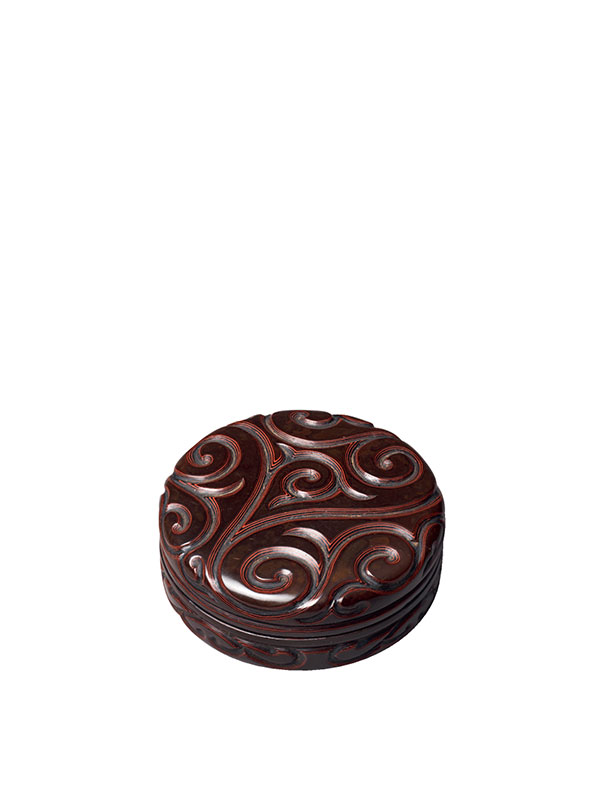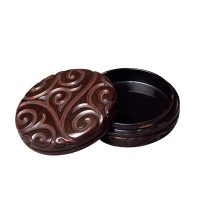Lacquer circular box carved in tixi technique
China, early Ming Dynasty, 15th century
A lacquer box and cover of circular form with flat top and base. The top and sides are carved with irregular patterns of ‘pommel’ scrolls. The grooves are cut at a diagonal angle, showing the alternating layers of red and black lacquer and the surface is highly polished. The interior and the recessed base of the box are lacquered black.
This box, carved with a striking abstract geometric design pattern of ‘pommel scrolls’ is so-called because the design resembles the shape of the ring-pommel on early Chinese swords. The pattern is generically referred to as tixi or ‘marbled’ lacquer. The grooves are deliberately cut at an angle, revealing the different coloured layers of lacquer used to build up the surface. The term guri, which is often used to denote this motif, was coined in Japan. Tixi lacquer is known from the Southern Song dynasty (1127 – 1279) onwards and became very popular during the Yuan dynasty (1279 – 1368). Very similar boxes in the collection of the Nezu museum in Japan were included in the 1984 exhibition Carved Lacquer at the Nezu Institute of Fine Arts in Tokyo.[1] Another box from the Garner collection was exhibited at the British Museum in 1973.[2]
Provenance:
Phillip Allen collection, Woolley & Wallis, Salisbury, November 2023
- Yoshikawa, S. Carved Lacquer, The Tokugawa Art Museum 1984, nos. 22 and 24, p. 21
- Barrett, D. Chinese and Associated Lacquer from the Garner Collection, Drydens Printers Ltd. 1973, 22a


